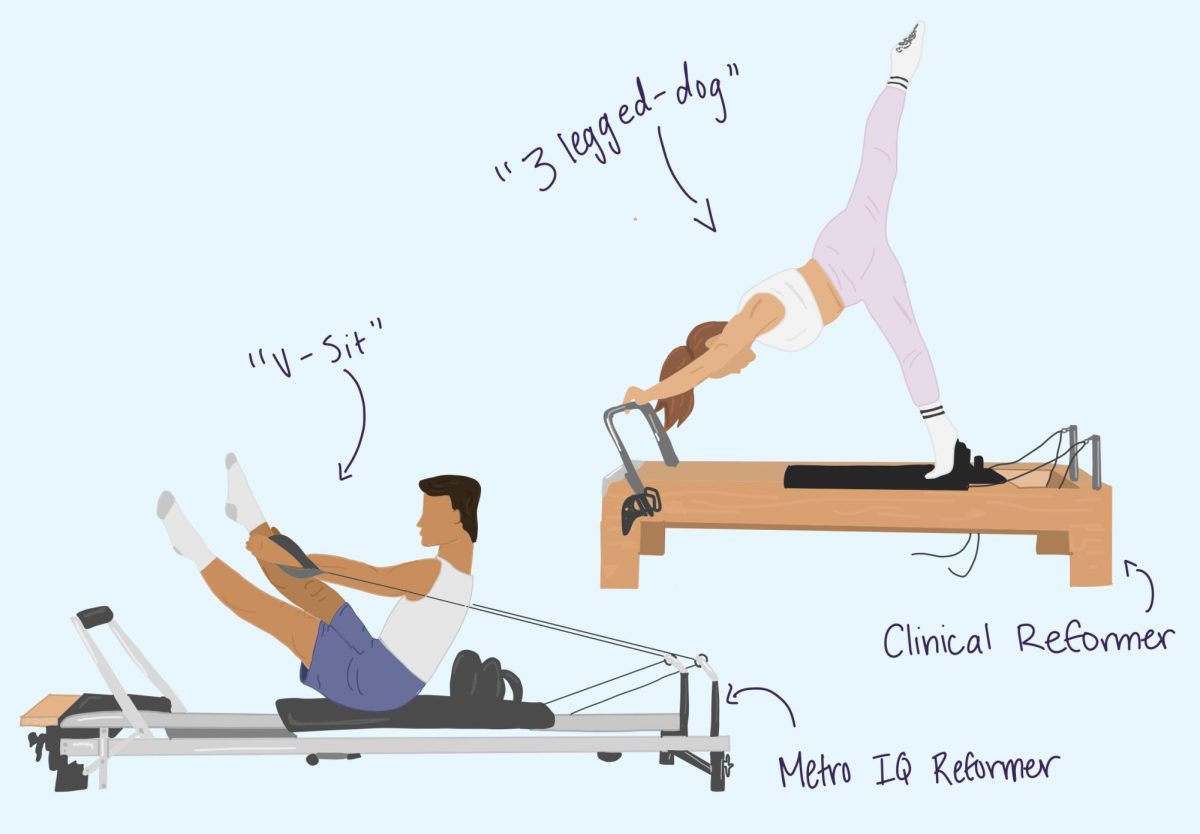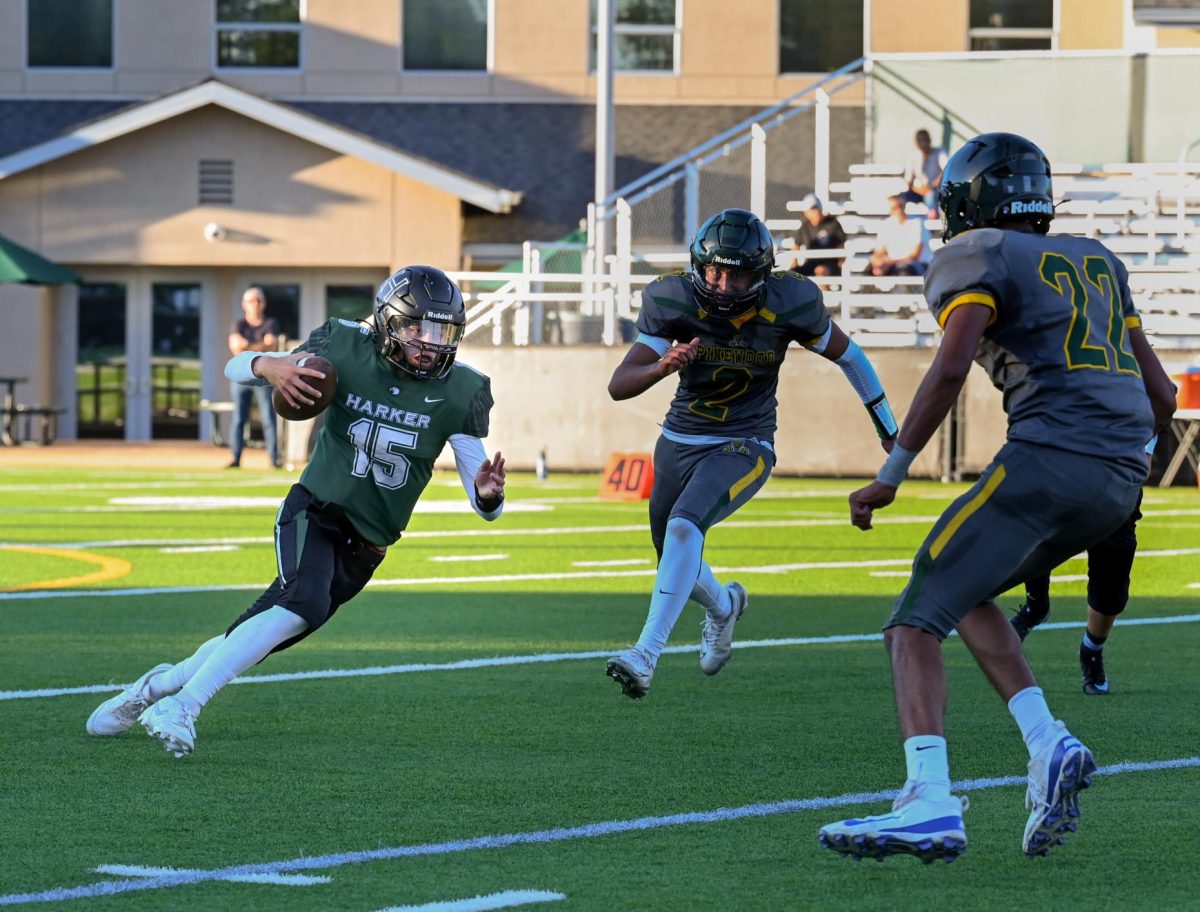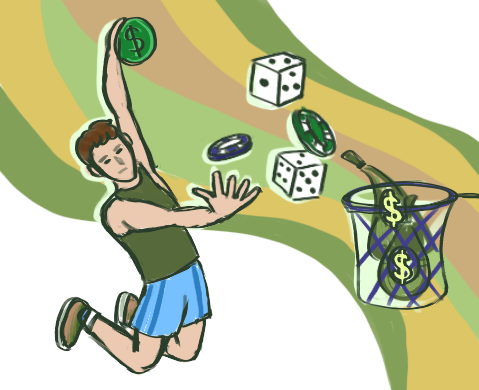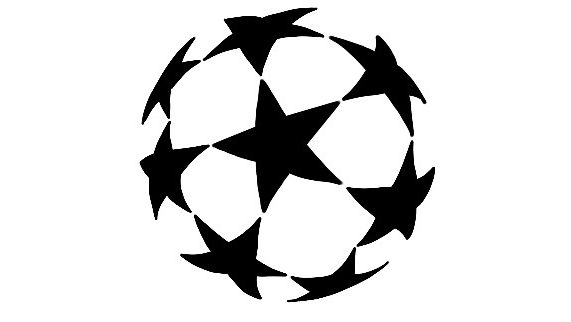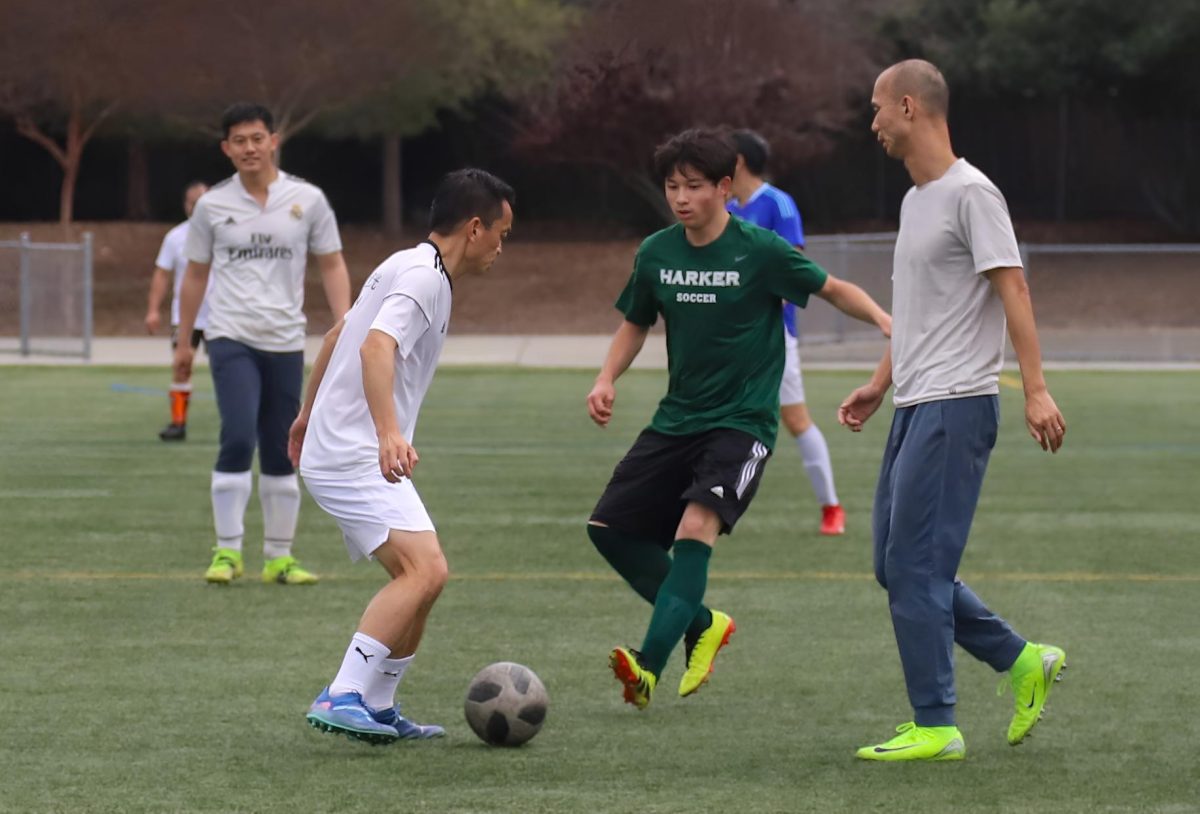Lithe ballerinas in baby pink workout sets, green juice-sipping “yoga moms” with long lean bodies and a closet full of designer active-wear — the word “Pilates” evokes the stereotype of grace and beauty that conceal its real athletic benefits.
Pilates has grown into a lifestyle of self care and feminine allure that encompasses the “Pilates princess” aesthetic. Portrayed by social media as a delicate activity focused on one’s appearance rather than strength or ability, Pilates is often viewed as an activity reserved for women that is not a “real” form of exercise.
Junior Natalie Barth, who started doing Pilates through YouTube videos at home during quarantine, emphasized how the stereotype promotes judgment among athletes as to what constitutes working out.
“If feeling cute and pretty while you’re working out is a way to motivate you, then that’s great,” Natalie said. “But it also contributes to the idea that Pilates is for girls and not effective. Even if it’s not high cardio or high impact, if you’re doing it properly, then you will feel change.”
Combining mat exercises and specialized equipment, such as the Reformer, a machine that increases the resistance of movements with springs and pulleys, Pilates centers around control and alignment of the body, rather than high intensity, cardio based exercises. With its emphasis on core strength coupled with flexibility and balance, Pilates allows practitioners to develop a connection between their mind and body that is rare in other forms of exercise.
French teacher Agnes Pommier embarked on her Pilates journey in 2006 in hopes of alleviating her arthritis. Upon noticing the improvements in her muscular support and mental clarity, Pommier was inspired to become a Pilates instructor herself. After five years of training and exams, Pommier began teaching at the YMCA, where she continues to work to this day.
“Pilates is really when you need to focus 100% of the time,” Pommier said. “If you lose your focus, you are not going to do it right, and especially on the apparatus, you might even get injured. So you really need to focus on your breathing and the voice of the instructor.”
With its focus on precision and technique over maximizing exertion, Pilates plays a large role in helping injured athletes regain their sense of body awareness.
Varsity girls soccer player Kylie Anderson (12), who works and practices at Power4 Pilates, noted how Pilates allowed her to continue to build muscle while recovering from injuries. As a goalkeeper, Kylie’s training requires frequent high impact movements, from diving to the ground to make saves to leaping into the air to tip a ball over the goal.
“With me having bad knees, it was a really good way to strengthen without destroying my knees more,” Kylie said. “I definitely saw an improvement in the overall way that my body felt and how all of my joints felt.”
Often perceived as ineffective, Pilates can be a helpful tool in reinforcing muscular stability that minimizes strain on the rest of the body. Its low-impact conditioning style works to complement other forms of sports training while prioritizing mobility and balance.
Attending Pilates classes weekly, Senior Ariana Gauba acknowledged that Pilates can be beneficial for athletes in building a well-rounded workout routine due to its slower pace.
“I used to do swimming and soccer, and those were all about being active and fast,” Ariana said. “Pilates is more about concentrating on one part of your body, strengthening it and stretching it out. It’s a good way to help your body with the other sports that you do.”
Additional reporting by Charlize Wang.


















![“[Building nerf blasters] became this outlet of creativity for me that hasn't been matched by anything else. The process [of] making a build complete to your desire is such a painstakingly difficult process, but I've had to learn from [the skills needed from] soldering to proper painting. There's so many different options for everything, if you think about it, it exists. The best part is [that] if it doesn't exist, you can build it yourself," Ishaan Parate said.](https://harkeraquila.com/wp-content/uploads/2022/08/DSC_8149-900x604.jpg)




![“When I came into high school, I was ready to be a follower. But DECA was a game changer for me. It helped me overcome my fear of public speaking, and it's played such a major role in who I've become today. To be able to successfully lead a chapter of 150 students, an officer team and be one of the upperclassmen I once really admired is something I'm [really] proud of,” Anvitha Tummala ('21) said.](https://harkeraquila.com/wp-content/uploads/2021/07/Screen-Shot-2021-07-25-at-9.50.05-AM-900x594.png)







![“I think getting up in the morning and having a sense of purpose [is exciting]. I think without a certain amount of drive, life is kind of obsolete and mundane, and I think having that every single day is what makes each day unique and kind of makes life exciting,” Neymika Jain (12) said.](https://harkeraquila.com/wp-content/uploads/2017/06/Screen-Shot-2017-06-03-at-4.54.16-PM.png)








![“My slogan is ‘slow feet, don’t eat, and I’m hungry.’ You need to run fast to get where you are–you aren't going to get those championships if you aren't fast,” Angel Cervantes (12) said. “I want to do well in school on my tests and in track and win championships for my team. I live by that, [and] I can do that anywhere: in the classroom or on the field.”](https://harkeraquila.com/wp-content/uploads/2018/06/DSC5146-900x601.jpg)
![“[Volleyball has] taught me how to fall correctly, and another thing it taught is that you don’t have to be the best at something to be good at it. If you just hit the ball in a smart way, then it still scores points and you’re good at it. You could be a background player and still make a much bigger impact on the team than you would think,” Anya Gert (’20) said.](https://harkeraquila.com/wp-content/uploads/2020/06/AnnaGert_JinTuan_HoHPhotoEdited-600x900.jpeg)

![“I'm not nearly there yet, but [my confidence has] definitely been getting better since I was pretty shy and timid coming into Harker my freshman year. I know that there's a lot of people that are really confident in what they do, and I really admire them. Everyone's so driven and that has really pushed me to kind of try to find my own place in high school and be more confident,” Alyssa Huang (’20) said.](https://harkeraquila.com/wp-content/uploads/2020/06/AlyssaHuang_EmilyChen_HoHPhoto-900x749.jpeg)



